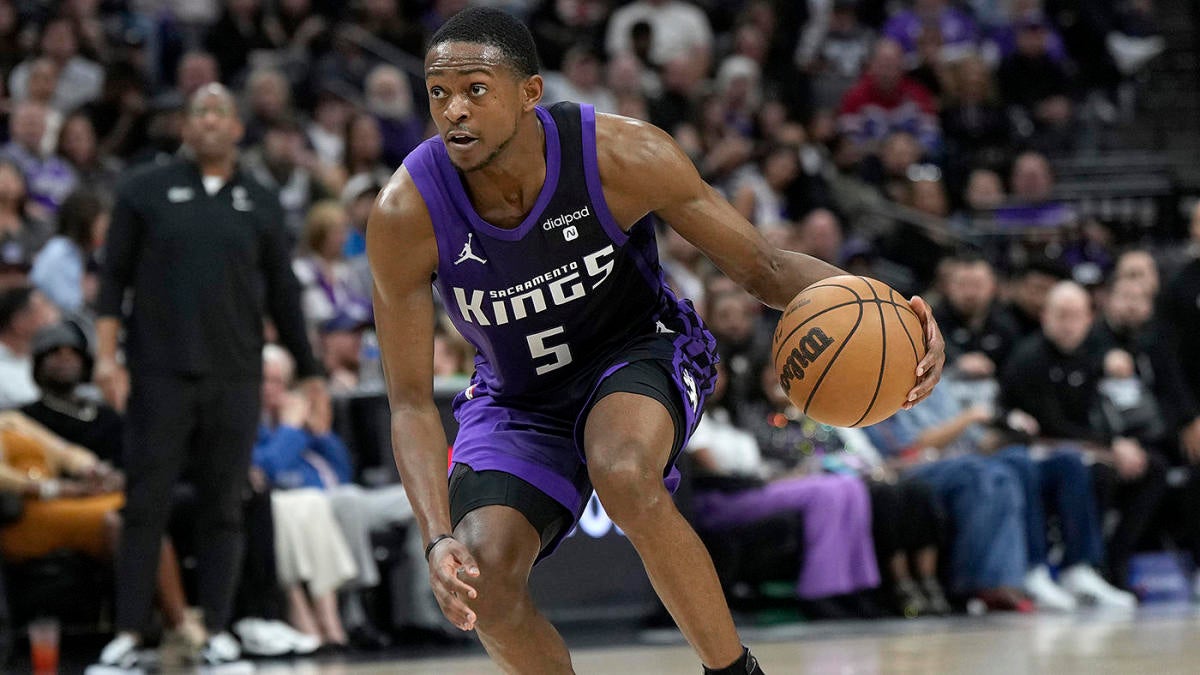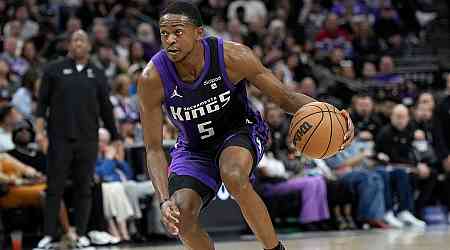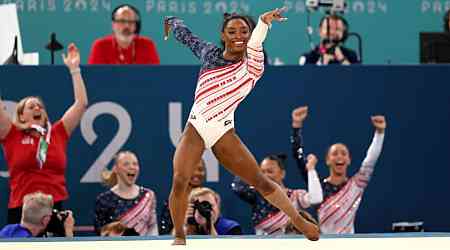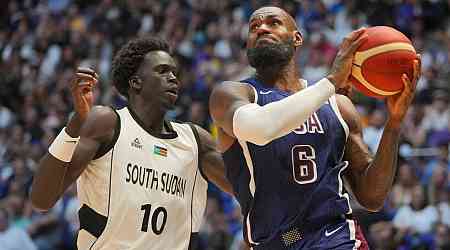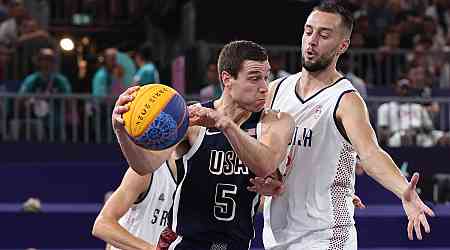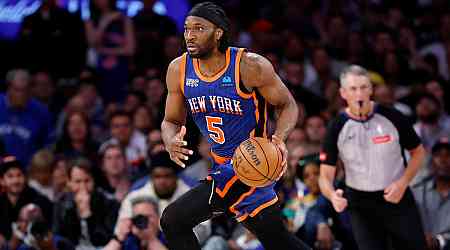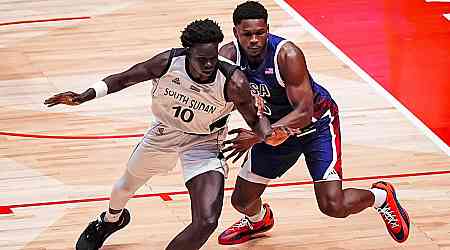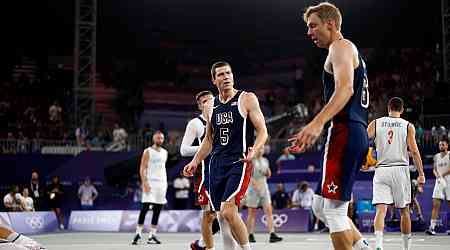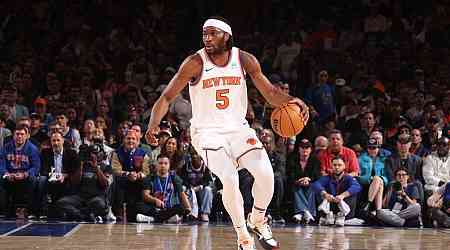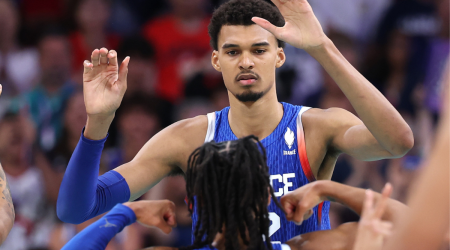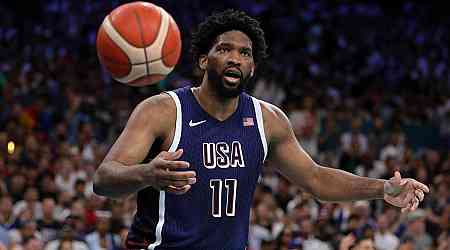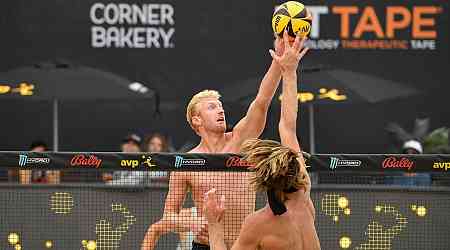
USA Basketball is off to a strong start at the 2024 Olympics... at least when it comes to 5-on-5. That may be the most traditional form of the sport being played in Paris, but it isn't the only one. Team USA also sent a 3-on-3 team led by former college star Jimmer Fredette, and it lost its Olympic opener to Serbia when the 5-on-5 team beat the same opponent by 26 points. Team USA's women also lost their own 3-on-3 opener to Germany, meaning the world's preeminent hoops power started 0-for-2 in this unconventional format.
If you want to know why Team USA has struggled in the 3-on-3 game, Isabel Gonzalez explained it for CBS Sports here. But let's say you want to fix it. Let's say you want to construct a roster of NBA players designed specifically to win a game of 3-on-3 as opposed to 5-on-5. And to make it interesting, rather than simply picking LeBron James, Stephen Curry and Kevin Durant, we're going to include the following stipulation: no player who has ever participated for Team USA in a senior men's tournament is eligible. Amateur participation for Team USA is fair game.
So before we build our roster, let's lay out what traits are most important in the 3-on-3 world:
- Individual offense. It's far more difficult to create an advantage with three players than it is with five. Players aren't going to find their own points within the flow of an offense as easily. Someone, ideally multiple players, needs to be able to create their own looks off the dribble or in the post.
- Shooting. In the 3-on-3 format, shots that normally count for two points count for one and shots that normally count for three points count for two. While it might seem like this makes 3-pointers less important, it actually makes them more valuable on a relative basis. In the NBA, a 3-pointer is worth 33.3% more than a 2-pointer. In 3-on-3, it's worth 50% more. Therefore, we need someone who can create and make 3-pointers off the dribble.
- Defensive versatility and toughness. It's much harder to hide a bad defender with three options on the floor than five. You're going to have to defend the ball in 3-on-3, and your team isn't going to switch as comfortably as it does in the NBA when there is more help behind you to cover mismatches.
So with that in mind, here are our four choices for our revamped Team USA 3-on-3 roster:
De'Aaron Fox
I seriously considered Trae Young for the role of designated ball-handler on our 3-on-3 roster. There are theoretical fits for him in this format. He takes a million pull-up 3's, he's great at passes that translate to 3-on-3 (like lobs), and his floater is a lethal weapon he'd have the space to unleash plenty here. But I just couldn't get past the defensive issues. I'm comfortable having a limited defender. I don't want someone's defense to pick on this easily.
So my backup was De'Aaron Fox. Most of the NBA's best pull-up shooters have already played for Team USA at the senior level, so the field was narrow here. C.J. McCollum was a tough cut as an experienced and reliable pull-up shooter, but I ultimately landed on Fox because of his versatility. He doesn't have an especially long track record as a pull-up shooter, but he really emphasized that shot last season, averaging 4.6 pull-up 3-point attempts per game last season. His speed is second to none, so he'll be able to get to the basket. He has a diverse mid-range game that has made him one of the NBA's best clutch scorers of late. And while he's no defensive stopper, he isn't Trae Young either.
There's not a perfect fit here. Most of the elite scoring guards available to us have some defensive deficiency. The pool you're picking from is likely Fox, Young, Darius Garland and Tyrese Maxey if you want an offensive centerpiece. McCollum just isn't quite as explosive. Fred VanVleet is a much better fit for five-on-five. But for the most part, our best offensive players have all played for Team USA already, so this was a tough slot to fill.
Herb Jones
Our primary defensive choice was easy. Herb Jones should've made the 5-on-5 men's team for the Olympics, but he wasn't even in the player pool. He can defend anyone. Literally. The Pelicans use him on centers as frequently as they use him on guards. His seven-foot wingspan will help him generate turnovers no matter who he's guarding. He's not exactly a high-volume 3-point shooter, but he's improved substantially since he arrived in the NBA. He made 41.8% of his attempts last season. He'll fit in well enough offensively, but his job is to play defense.
Scottie Barnes was the other primary candidate in the versatile wing slot here. He's certainly more of a ball-handler than Jones is. Both have improving but still somewhat questionable shots. In the end, Jones' superior defense won out. We're looking for someone to play a role in this position. The scoring will come from other places.
Julius Randle
The ideal big man for this exercise would have been Brook Lopez. Shooting, rim-protection, post-defense and the ability to score on his own near the basket made him a perfect pick. But Lopez played for Team USA at the 2019 World Cup, so he's out. I considered one of Team USA's younger big men like Cooper Flagg or Chet Holmgren, but decided against them partially because it felt against the spirit of the exercise to take players we assume are future locks for future 5-on-5 rosters. Plus, Holmgren's skinny frame and Flagg's lack of experience didn't help matters.
So why Randle? He's not an elite defensive big man, but according to Synergy Sports, he's ranked in the 72nd percentile or better in terms of post defense in three of the past four seasons, so he should be able to hold up against most opposing bigs (and Jones is available if there happens to be a matchup he can't handle). He can get to the rim, score in the post, make jumpers, create looks for others and is at least athletic enough to hold up on the perimeter if he gets a bad switch. This is a jack-of-all-trades pick. Randle does a little bit of everything, and his skill set translates well to the 3-on-3 format. Big men that can outmuscle most opponents for both points and rebounds while also retaining some mobility are pretty rare. With most of the world's best big men either playing for Team USA's 5-on-5 team or hailing from another country, this was the best pick on the board.
Desmond Bane
Our first three choices were all players who can shoot, but aren't necessarily the most reliable deep shot-makers in the NBA. For the final spot, the only priority was landing a reliable sniper. Bigger forwards who offered a bit more defensively were considered like Keegan Murray or Trey Murphy, and so were role-player shooters like Donte DiVincenzo. Ultimately, the right choice here was the higher-end scorer. Bane is an elite 3-point shooter that can also create good looks for himself inside of the arc.
Playing him and Fox at the same time might cause some defensive issues, but having Jones helps quite a bit on that front. Bane may not be a defensive stopper, but he comes from an NBA team with a strong defensive culture. He makes the most of his tools on that end of the floor. Here we're left with a team that certainly emphasizes offense but comes with the requisite toughness and versatility to cruise to a gold medal.


















